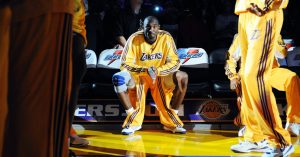The benefits of folding-screen technology are obvious by now. You can make a device half of its size (or even smaller) if its components can bend without breaking. We first saw a real folding phone at CES 2019 from the relatively unknown Royole, and through the rest of the year Samsung, Huawei, TCL and Motorola all unveiled their own takes. This CES, Dell, TCL and Intel showed off concepts and prototypes while Lenovo launched its commercially ready ThinkPad X1 Fold — complete with specs, pricing and accessories.
With the exception of TCL’s Android device, these foldable tablets were running Windows 10 with demo software created to stand in for Microsoft’s upcoming made-for-dual-screen Windows 10X. It was first announced in October, and we don’t know much about it other than that it’ll offer ways to interact with apps across displays and that it’s meant to perform efficiently. PC makers don’t even have access to it yet: Lenovo’s ThinkPad X1 Fold is going to be the first commercially available foldable tablet, and it won’t even run the new software. It’s a noteworthy absence, since one of the biggest challenges in making feasible foldables is to create software for applications that enable powerful and intuitive multitasking. So companies have had to envision what users might want in such a device.
When you open the tablet and snap it in place, for example, wouldn’t it be nice if the app you were using expanded to fill the screen? Or say you were using two unevenly spaced windows: When you begin to fold the screen, perhaps the two apps could automatically snap into place, each taking half the space. These are largely problems that Windows 10X will have to solve, but companies like Lenovo and Dell don’t want to rely completely on Microsoft. They’ve come up with what they think users would want, and patterns are starting to emerge.
It’s clear that making apps split the screen quickly is a popular tool, as is offering a gesture for an app to take up the full screen. Both Dell’s and Lenovo’s demo software enabled this. Another common feature is some sort of virtual keyboard that will take up the lower portion of the display when the tablet is folded and propped up in portrait mode like a mini laptop.
For example, Lenovo made a mode-switcher tool that lets you quickly expand apps, split the screen in two or pull up an on-screen keyboard, though that last option only shows up when the Fold is in portrait mode. Intel had a similar demo on its Horseshoe Bend concept device, though I found it easier to type on its roomier 17-inch screen.
That’s one advantage that folding tablets and PCs have over smartphones: Their screens are large enough to offer a digital keyboard that doesn’t feel too cramped. But software keys still don’t offer a great typing experience, and at CES companies showed they had a potential solution. Lenovo and Dell made keyboard accessories that sit on top of the bottom half of the screen for a more tactile experience, and these offered comfortable travel. Since they had to be small enough to fit on half of a 13-inch screen though, these keyboards aren’t laid out like on a regular notebook, so you still won’t want to use them as a laptop replacement. It’s also worth considering the Surface Neo’s magnetically attachable keyboard, which seems like a particularly handy setup, even if that’s not technically a foldable tablet.
The 17-inch Intel prototype might be an indicator of a size sweet spot. I preferred typing on its virtual keyboard than on Lenovo’s or Dell’s, and even though its hinge was somewhat rickety, I didn’t find the tablet too large or unwieldy to maneuver. Intel didn’t have a physical keyboard for us to play with, but I imagine that would be roomier and better laid out too.
Companies also believe you’ll want to write on these foldable laptops — as in, taking down notes digitally while holding these devices half folded like you would a book. Lenovo offers a stylus for the X1 Fold (though you’ll have to pay extra for it), and Dell also showed off a pen with its concept Ori. This was one area where a smaller folding device felt more comfortable: It was easier to hold a 13-inch tablet in one hand while writing on it with the other than a 17-inch.
For Windows 10X to be effective, it will not only have to cover all these scenarios but also do so better than PC makers have already. The good news is that from what we saw at CES 2020, it’s clear the laptop industry’s vision for foldable PCs is beginning to coalesce.
Follow all the latest news from CES 2020 here!
All products recommended by Engadget are selected by our editorial team, independent of our parent company. Some of our stories include affiliate links. If you buy something through one of these links, we may earn an affiliate commission.

Comments

189
Shares





